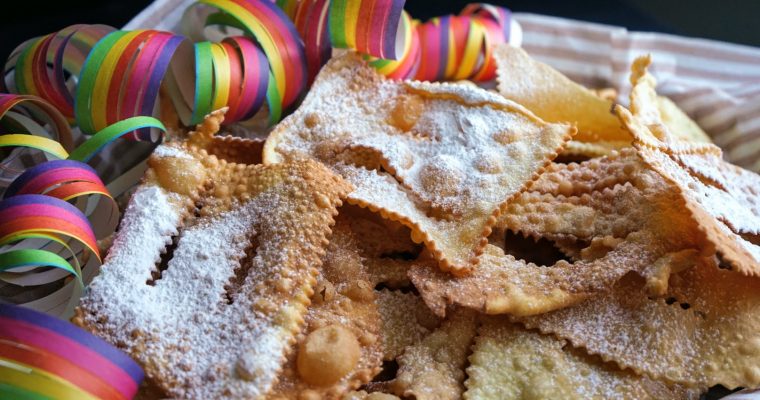Crostoli are typical fritters of the Italian tradition prepared especially during the carnival period. They have different names depending on the area where they are prepared, so they will be chiacchere in Milan, frappe in Rome, carafoi in Ladin-speaking areas, bugie in Piedmont and Liguria, crostoli in Vicenza, Belluno, Treviso, Friuli Venezia Giulia: the name changes but not the substance! There is an alcoholic component in the dough, they are fried to become irresistible, fragrant and crumbly. Below I share my grandmother’s recipe who also have orange juice in the dough.
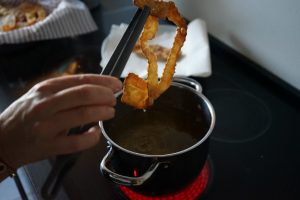
Ingredients for about 60 crostoli
- 350 gr all purpose flour
- 30 gr butter
- 50 gr sugar
- juice of 1/2 orange
- 2 eggs
- 1 pinch of salt
- 50 ml Cognac
- 1 liter sunflower or peanut oil
- powdered sugar
Method
Let the dough rest, wrapped in cling film, for 30 minutes in the refrigerator.

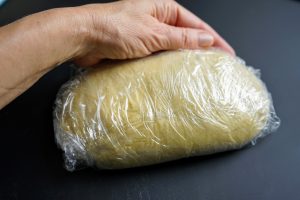
On a floured work surface, flatten a small amount of dough with your hand, flour it and, with a rolling pin, roll out very thin (you have to see through) (sometimes folding the dough on itself; this operation will ensure the formation of bubbles cooking). If we use the machine to roll out the dough, we pass the dough between the rollers. In this case, pass between the rollers initially at the widest thickness repeating the operation several times and each time reducing the thickness and always folding the previous strip in half, until the desired thickness is reached.
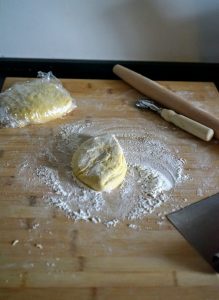

At this point, with the toothed wheel, cut rectangles about 5 cm long. Gradually place the crostoli on a tray lined with a lightly floured cloth, waiting to be fried. Repeat the above until the pasta is finished.
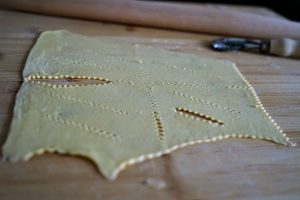
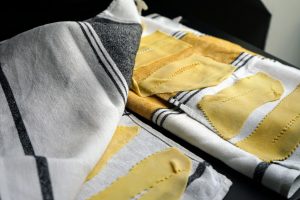
Once all the crostoli have been cut, heat the oil in a tall, narrow saucepan until it reaches a temperature of 170 degrees. If you don’t have a thermometer, do the test with a piece of pasta: if the oil is ready it must immediately fill with bubbles.
As soon as the oil has reached the right temperature, put in it one or at most two crostoli at a time, leave a few seconds untili the dough becomes gold. Remember to turn i crostoli while cooking. If the dough gets too dark it means the oil is too hot, so let’s move it away from the heat for a few moments.

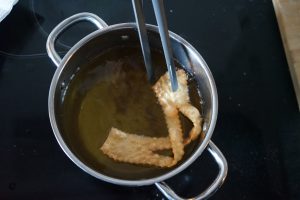

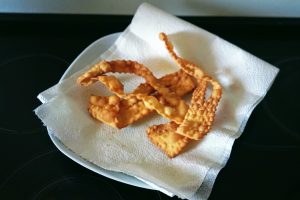
Drain the crostoli over some kitchen paper . Then transfer them to a tray and sprinkle with some powdered sugar when they are still worm so the sugar will penetrate into the crostoli.

